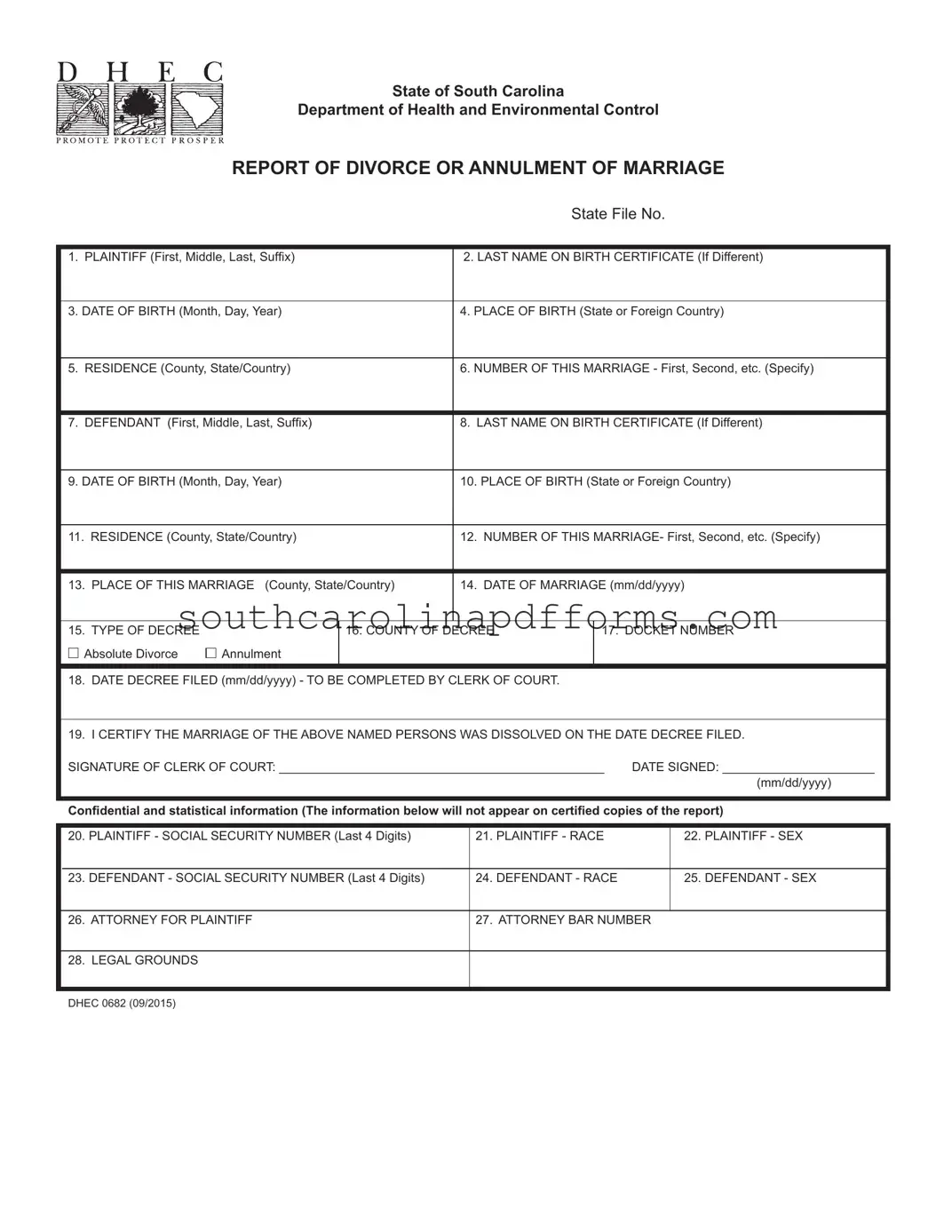The DHEC form, officially known as the Report of Divorce or Annulment of Marriage, plays a crucial role in documenting the legal dissolution of marriages in South Carolina. This form collects essential information about both parties involved in the divorce, including their names, birth dates, and places of birth. It also requires details about the marriage itself, such as the date and location of the ceremony, and the number of the marriage (first, second, etc.). Additionally, the form specifies the type of decree being sought, whether it is an absolute divorce or annulment, and includes a section for the court clerk to certify the dissolution. Confidential information such as the last four digits of Social Security numbers and demographic details about the parties is also gathered, although this data will not appear on certified copies of the report. Understanding the DHEC form is essential for anyone navigating the divorce process in South Carolina, as it ensures that all necessary information is accurately recorded and submitted to the appropriate authorities.
